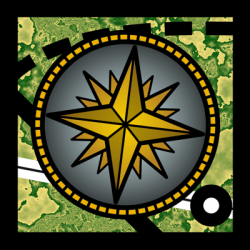Comments
-
3GALE is primarily military these days, much dynamically encrypted (content and addresses), so a dedicated decoder for it is not really very useful for UTE monitoring. This could change if non-mil users convert eventually to 3G. But that is unlikely…
-
Wow, it's already on the wish list. That's good news! If I remember correctly, one of the older voice squelch circuits utilized a bandpass filter for sensing peaks of human speech energy in the 350Hz to 1kHz range, and that went into a wide lock ra…
-
Yes, a lot of operators in USA are familiar with the Micom or the Icom voice squelch. In Australia and NZ, it is a very common feature in Land Mobile HF radios. Icom's voice squelch is found in the IC-746, IC-F7000, IC-F8101 series, and perhaps s…
-
There are thousands of 2G ALE signals on the air. ALE has become one of the most common signals on HF. It would be wonderful to have an ALE decoder for the kiwiSDR. I certainly would use it every day.
-
"Filipino fishermen speaking in Tagalog 16540/16545/16550KHz USBCould be Indonesian village radio 10940KHz +/- 100KHz USB" The 16540 kHz USB channels are normal Marine SSB channels. Indonesia has a widely utilized 10 MHz SSB service, simi…
-
I'm glad it's not that I've set something up wrong :) So, I'll probably have to just wait for some future version that has user preferences.
-
62 kHz increments of dirty but stable carriers are very common. It is generated by the digital circuits inside wired LAN switches and LAN routers. Ferrites on all the I/O CAT-5 cables and power supply cable of the LAN can help to suppress it. Gettin…
-
Thanks, WA2ZKD and G8JNJ, for the advice on using WinSCP and editing the file in Windows. I was able to get the dx.json file edited. I used approximately the following settings in WinSCP: site Settings:file protocol: SCPaddress 192.168.1.100 port 22…
-
I would like to delete most (or all) of the lines in the default dx.json file, to make all new frequency markers. I'm unfamiliar with Debian. But, I've logged into the Beagle Debian console in the kiwiSDR admin panel. Then, using the shell commands…
-
HF receiver users are probably interested in: 1. Location of receiver? 2. Does it have an antenna capable of receiving the frequency range?3. Does the receiver have good SNR? It takes a lot of trial and error to find a remote receiver that might me…
-
I agree with your solution, the "addition of +/- jog button to the manual calibration panel" . It would solve the problem of not enough resolution in the GUI/mouse method to enable a user to access the calibration accuracy that KiwiSDR is …
-
After using the IQ display method in AM NARROW, I've found that it is quite accurate, and I've been able to achieve better than +/- 1 Hz.
-
Hi John, Thanks for your detailed answer. As you can see, the problem was self-solved, but your details show that there is more accuracy that can be achieved. Presently, I'm a noob KiwiSDR owner and just set it up for testing on a local private LAN …
-
A follow-up comment. Hopefully I'm now able to self-answer my previous question. After some experimenting, I found that I'm able to get within about +/- 2 Hz immediate frequency calibration now: with or without GPS enabled. Randomly, it seems possib…
-
What is the expected GPS-corrected accuracy in +/- Hertz when tuned to 10 MHz?
